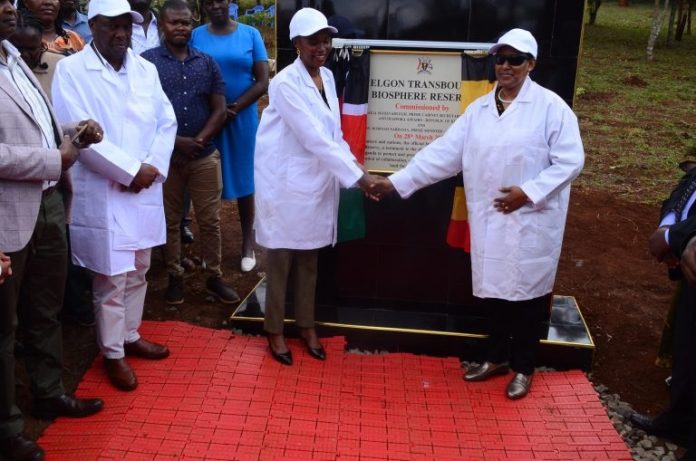In a groundbreaking move for environmental conservation, Uganda and Kenya have signed a Memorandum of Understanding (MoU) to enhance the joint management and protection of the Mount Elgon Ecosystem. This historic agreement was formalized at the Suam border in Kenya’s Trans-Nzoia County on Friday.
Doreen Katusiime, the Permanent Secretary (PS) in Uganda’s Ministry of Tourism, Wildlife, and Antiquities, signed on behalf of Uganda, while her Kenyan counterpart, Silvia Museiya, the Principal Secretary in the Ministry of Tourism, Wildlife, and Heritage, represented Kenya.
Objectives of the MoU
The primary goal of this MoU is to establish a collaborative framework for the conservation of Mount Elgon as a transboundary biosphere reserve. The agreement aims to:
- Promote joint actions for the protection, conservation, and sustainable management of the Mount Elgon Ecosystem.
- Set up institutional arrangements for coordinated management efforts.
- Support eco-economic development through joint tourism initiatives, business opportunities, and strengthened political ties.
Areas of Cooperation
Under this MoU, Uganda and Kenya will work together in various areas, including:
- Strengthening institutional capacity for conservation efforts.
- Developing joint plans, programs, and projects.
- Allocating resources for effective implementation.
- Managing the Mount Elgon Ecosystem as a critical water tower, promoting integrated water resource management.
- Addressing land degradation, pollution, climate change, and biodiversity loss through collaborative strategies.
Commitment from Both Countries
During the signing ceremony, Doreen Katusiime emphasized Uganda’s commitment to the sustainable use and preservation of the Mount Elgon Ecosystem. She highlighted the long-standing informal collaboration between the two nations and lauded the MoU as a formal step towards regional economic integration and connectivity.
Silvia Museiya acknowledged the decade-long process leading to the MoU’s realization and commended both governments for their continued cooperation. She emphasized the critical role of Mount Elgon in providing essential resources such as clean water, air, and food. Museiya also reassured local communities that conservation efforts would be pursued through a community-based natural resource management approach, ensuring that people and nature coexist harmoniously.
Significance of the Mount Elgon Biosphere Reserve
The Mount Elgon Ecosystem plays a vital role in climate change mitigation, carbon sequestration, watershed management, and biodiversity conservation. It was designated as Africa’s second transboundary biosphere reserve during the 35th session of the UNESCO MAB International Coordinating Council in Paris in June 2023.
This designation affirms the commitment of both Uganda and Kenya to joint conservation efforts, ensuring that Mount Elgon remains a hub for scientific research, education, and sustainable development. Local communities will actively participate in managing and governing the reserve, aligning their livelihoods with conservation goals.
The transboundary biosphere reserve status enhances Africa’s global reputation in sustainable development and biodiversity conservation. With a total core zone of 165,575 hectares, a buffer zone of 125,142 hectares, and a transition zone of 297,630 hectares, Mount Elgon provides critical habitat for globally threatened species and supports essential ecological processes.
A Milestone in Regional Conservation
The signing of this MoU is a testament to Uganda and Kenya’s shared vision of environmental stewardship. By fostering collaboration, strengthening conservation strategies, and engaging local communities, both nations are setting a precedent for sustainable natural resource management in Africa. Mount Elgon’s designation as a UNESCO Transboundary Biosphere Reserve highlights the potential for cross-border cooperation in preserving vital ecosystems for future generations.

